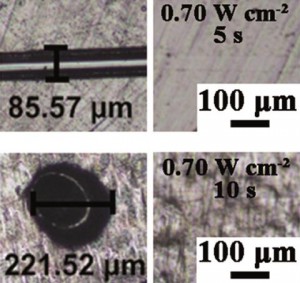Researchers in China have designed multi-talented materials with mix-and-match functionalities, such as shape memory, self-healing or colour changes, which can be triggered by stimuli such as heat, light or voltage.

Source: © Royal Society of Chemistry - The polymer can heal a scratch (top left) or hole (bottom left) within 10 seconds when exposed to light
Stimuli-responsive polymers adapt to environmental changes, making them useful for applications such as drug delivery systems that exploit differences in pH to direct medicines to the required organs or thermochromic coatings for windows reversibly tint the glass in response to temperature.
However, integrating responsivity to numerous stimuli in smart polymers ‘in particular when considering a simple and feasible synthetic route’, has been challenging, notes Patrick Théato, from the University of Hamburg, Germany, who wasn’t involved in this work.
Read the full article in Chemistry World >>>
Multi-stimuli responsive and multi-functional oligoaniline-modified vitrimers
Qiaomei Chen, Xiaowen Yu, Zhiqiang Pei, Yang Yang, Yen Wei and Yan Ji
Chem. Sci., 2016, Advance Article
DOI: 10.1039/C6SC02855A, Edge Article










